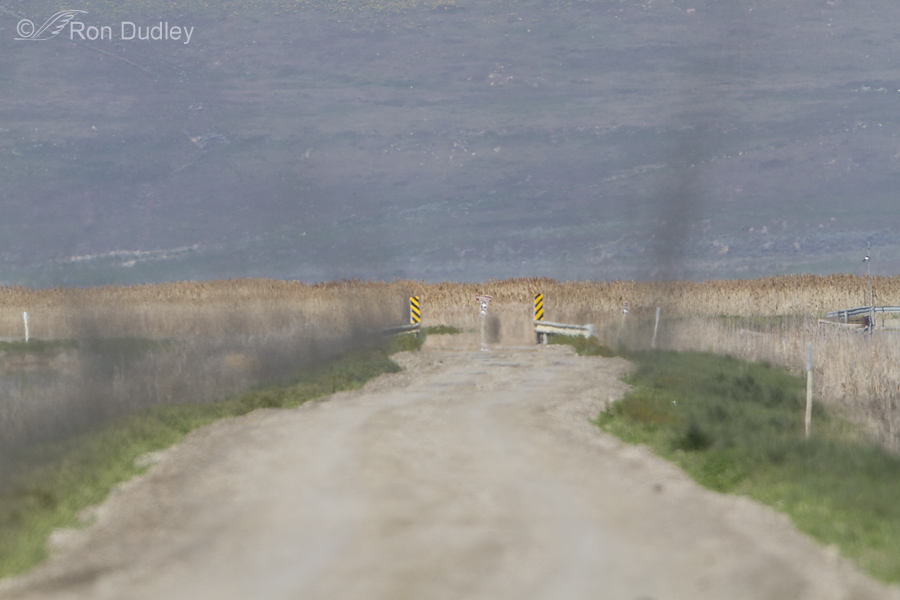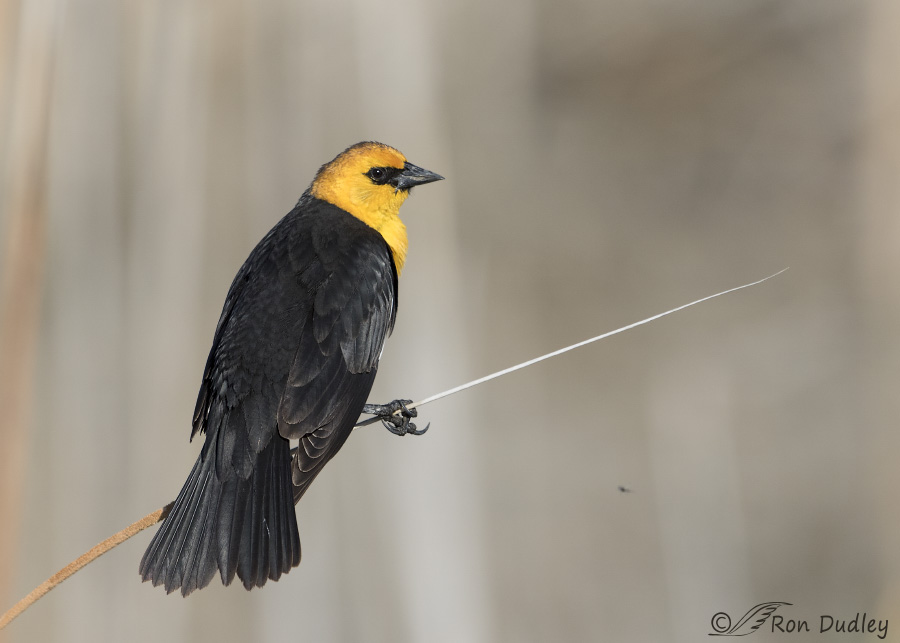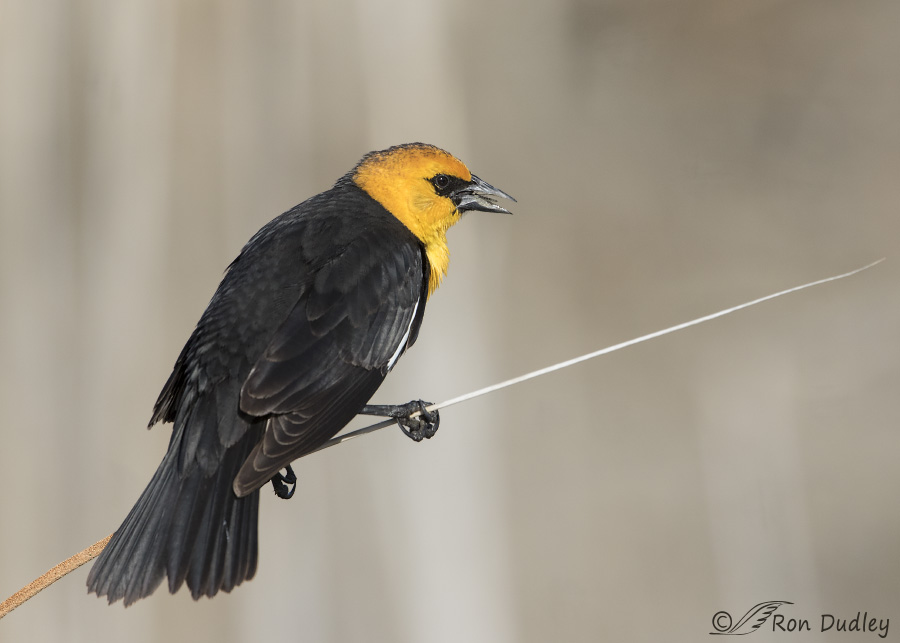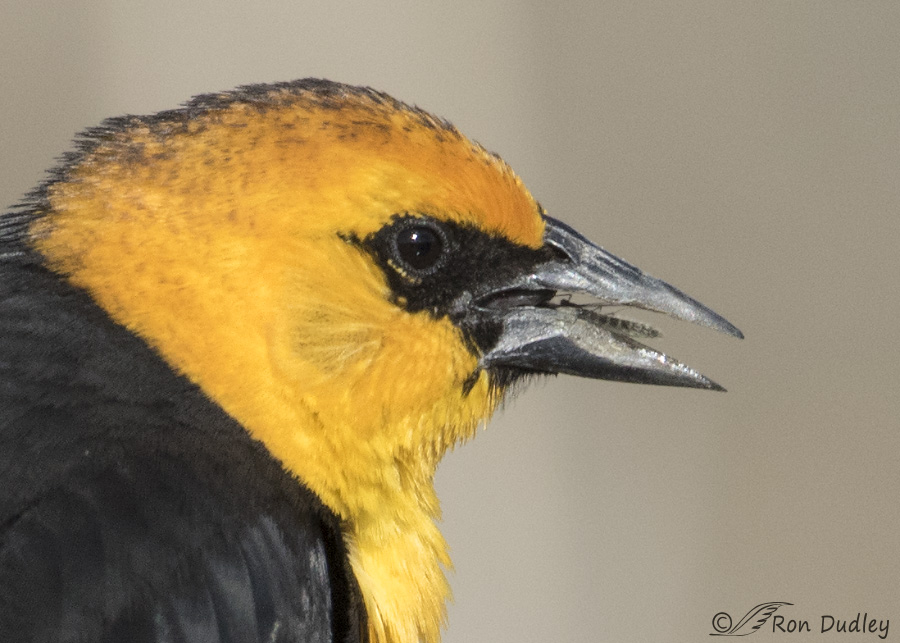Tis the season for midges in northern Utah.

This time of year the concentrations of midges in the air in our marshes can be mind-blowing. Here we see clouds of them, often called “midge tornadoes”, alongside the road at Bear River MBR. They concentrate in these visible vertical columns but they’re really everywhere in the air and on the vegetation and most everything else. There were so many of them on this day that I couldn’t even get my camera to focus and everything looks slightly soft through the hordes of insects. Since I have to shoot with my window down there are times when I can barely see the color of the headliner in my pickup for all the midges crawling all over it. When one gets in your eye they can put you out of commission as a photographer (and driver) for some time.
The good news is that they don’t bite and they provide a sumptuous bounty for many of our birds near the Great Salt Lake.

1/4000, f/7.1, ISO 500, Canon 7D Mark II, Canon EF 500mm f/4L IS II USM, not baited, set up or called in
Yellow-headed Blackbirds take advantage of the food source using an interesting and energy-efficient technique. They simply perch on the cattails or phragmites and wait for one of the midges to get close enough to its head so that the bird can easily snag the insect out of the air with very little effort. I photographed this one five days ago at Bear River with its eye on the (out of focus) midge at lower right.
I often try to time my shots to catch the actual snagging process but it isn’t easy because it’s very quick and difficult to anticipate since I often can’t see the midge through my lens.

1/2500, f/7.1, ISO 800, Canon 7D Mark II, Canon EF 500mm f/4L IS II USM + 1.4 tc, not baited, set up or called in
I was a split-second late with this one but we can see the midge in the bird’s mouth.

A huge crop (4.5% of the original image) of the previous photo gives us a better look at the midge.
There are many species of midges and a few of them are blood-suckers, potentially spreading disease, but thankfully those around here are innocuous and a great food source for birds. To the uninitiated they resemble mosquitos and can be quite intimidating. First time visitors to Bear River MBR can often hardly wait to get off the auto tour loop and back to “civilization”.
And that’s ok with me. The less traffic on the loop road the better…
Ron


You forgot to mention that as you leave the bugs hitting the moving vehicle sound like rain hitting. When you arrive home you notice your vehicle is fuzzy with the dead bugs. The dead bugs really stick and are very hard to wash off.
I am so glad, speaking as well established bait, that your midges are not vampiric. And really appreciate the giant crop to reveal the Yellow-headed Blackbird’s breakfast.
EC, if those things were blood-suckers I’d be drained dry in seconds with only a crisp husk left behind!
I’m late to today’s post, but I’ve got to echo everybody else, plus add the ridiculously redundant OH WOW! I’ve been in those swarms and it’s NOT something I’d choose to do regularly–or even again! But as long as the birds eat them, I’m good. I’d guess swifts and swallows feast on them, too, catching them on the wing. Now THAT would be a near impossible shot, wouldn’t it? LOL!!
Again, thank you!
Thanks, Laura. Yes, swallows chow down on them but so do loads of other birds. A regular avian smorgasbord.
Ron, I want to echo everyones comments. I check your post every morning because I love the beautiful photography. Both for beauty of the composition & the technical aspects. I also appreciate the educational part.
Keep Up The Good Work & Thanks
I’m glad to know that you appreciate both, David. So do I – that’s why often include both aspects.
I love these shots. Clouds of them. Yikes! I first looked at the picture and wondered why you were showing a blurry picture. I kept staring at it before I read your notes about it. Very cool.
You must have the patience of a saint!!
“You must have the patience of a saint!!”
Only with birds, Carol. And I must admit that’s the first time anyone has ever compared me, in any way, to a saint. Probably the last time too!
As amazing as your capture of the “midge in the mouth” is, the fact that that bird, solid as it looks, is so light it can actually perch on such a thin, probably brittle, spear of vegetation without breaking it!!! Those swarms of miserable little midges must make “pitcher taking” a real challenge!–In the ears, eyes, nose etc. Thankfully, they provide plenty of food for hungry birds…The detail in this image is fantastic!
Patty, you ought to see me try to maintain focus on the bird when it’s on a perch like this and there’s even the slightest breeze. The breeze makes the bird wave around all over the place – almost impossible to follow with a long lens.
Great sequence and commentary on the midges. My first thought was the midges that cause disease in Whitetail Deer from time to time – they are still recovering here from an outbreak 2 or 3 years ago!
I didn’t know that some midges are the vector for disease in deer, Judy. Thanks for that info!
Simply stunning shots Ron!
Charlotte
Thanks, Charlotte.
What Roger said, Ron ! He expressed what I think every time I enjoy your blog; what you give is SO MUCH MORE than the communication of visual beauty—the understanding
of the patterns and processes of behavior that you impart is an expression of the holistic beauty of life…….
Thank you, Kris.
Ron, the photo is great as usual. The explanation and view of the midge makes your photo even better for those of us who learn from your posts. Thanks
I’m glad you appreciate the “learning”, Diana. Thank you.
And a wonderful “addiction” it is. There are a bazillion photographers out there,
taking pictures with all kinds of image capturing equipment, but that is all that
most of them ever do, just take a “snap,” even the pro’s. That is where you differ
from the norm, and the commonplace, and why the biological knowledge that you deliver
is so vitally important in this modern world. Because so many of our “leaders” seem
to lack the biological knowledge, and any concern over how we are negatively affecting
the environment, all the information about how “things work” is extremely important.
It is just too bad that so many in power have so little knowledge, or concerns…
Another great sequence, and story… I love it when you show behavior with your images.
A lot of nature photographers just strive for “pretty pictures,” and miss the opportunity
to actually teach something interesting with their photos. You, however, combine the skill
of a photographer with your knowledge of the natural world, and put both talents to good
use in this blog. Well done Ron, very well done. I hope your readers fully appreciate
what a “treasure” you are to all of them… :-)))
Thanks very much, Roger. I’m addicted to bird behaviors…
The bird behaviour are the best part…even though the images are amazing…PLEASE continue with the addiction!!!